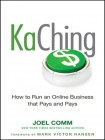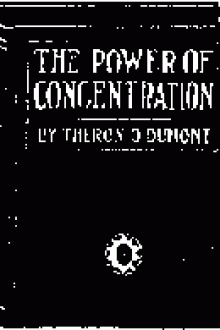KaChing: How to Run an Online Business that Pays and Pays Comm, Joel (books for 8th graders txt) 📖

Book online «KaChing: How to Run an Online Business that Pays and Pays Comm, Joel (books for 8th graders txt) 📖». Author Comm, Joel
You should be using press releases as part of your business strategy. The more often you appear in the media, the more you’ll drive home the idea that you’re an expert. You’ll be able to add the logo of the outlet to your web site, thus building your credibility. Other reporters will see that you’ve been interviewed, know who you are, and feel easier about contacting you for interviews.
Whenever you bring out a new product, you should send out a press release. Whenever you launch a new coaching workshop, you should send out a press release. Whenever you do anything, you should send out a press release and use that opportunity to build your brand as an expert across a wide audience (Figure 7.3).
Getting Started: Low-End Coaching
When you see a well-known speaker take to the stage, it’s easy to feel that you’ll never be doing that. You might not. Not everyone feels comfortable sharing their knowledge on the stage. But if it is something you want to do, then it is something you can do. Coaches—even the biggest names—aren’t superhuman individuals capable of leaping a 50-foot stage in a single bound. They’re just regular entrepreneurs—like you—who have built up their knowledge and want to share it. They’ve managed to build their brand and spread it to such an extent that they’re now invited to address conferences, put on workshops, and guide other entrepreneurs toward their dreams. They sell coaching kits that cost thousands of dollars, and when it comes to personal consulting, the sky’s the limit.
Yet none of them started out that way. All of the biggest coaches you can think of started small, teaching their skills to small groups of people who were keen to learn.
It’s a process that relies on your own skills and your own effort. You won’t need to depend on receiving an invitation from a conference organizer, and you won’t be left hoping that people will turn up so that you won’t be addressing an empty room.
Organizing your own coaching events and selling your own consulting services might be hard work. It might even involve a little financial risk (although it doesn’t have to). But the immediate returns can be enormous, and it’s the best way to get your feet wet and build experience. You don’t want your very first coaching session to be with someone who has paid a giant sum for the privilege of being a guinea pig. After all, your coaching fees won’t just reflect the value of your knowledge; they’ll also reflect the ease with which you transfer that knowledge to your clients.
A low-end coaching program—the kind best suited to someone just starting out as a coach—can consist of a number of different packages. The most basic is telephone coaching. The meat of the package will be a number of monthly telephone calls. These can last anywhere from half an hour to an hour and might take place once a week or three times a month. You can also toss in a few valuable information products, such as an e-book laying out your ideas, a free assessment of where the business stands at the moment, and a personalized action plan that can act as a guide for the client’s development over the course of the program. You might also want to make yourself available for e-mail correspondence in between phone calls.
The rate for a program like that could easily be around $400 to $500 a month, with a six-month minimum commitment. Considering that the total amount of time actually spent working with the client might be only an hour on the phone, an hour preparing for the call, and the odd 10 minutes here and there to write an e-mail, it’s easy to see that even this simple formula can deliver great hourly rates.
You wouldn’t need more than half a dozen telephone clients a month to give your income a meaningful boost and your business a loud KaChing.
Alternatively, or additionally, you could offer coaching in person. This would also provide the assessment, action plan, and any other information products you want to toss in, but mostly it would consist of meetings at the client’s office once a week or several times a month. The meetings would last longer than the telephone calls and allow you to interact with the client a little better. Fees for this kind of coaching are often three times that of telephone consultations. They have to take into account the time spent traveling to and from the client’s office as well as the extra value of having you on the premises.
Of course, personal coaching will usually be limited to people within your catchment area. As you grow your coaching business, you might well find that you’re getting requests from people farther away who will be willing to pay your travel expenses and even your hotel fees. When you’re putting in that much effort to coach someone, your fees will need to reflect the work involved. Considering the long flights and time spent away from home, you should charge enough to feel grateful when prospective clients either say no or agree to your terms.
Those are the two most basic models for coaching, but you can also break out segments of your coaching to create niche products. Business coach Suzanne Muusers, for example, offers marketing consulting services and web site and SEO consultations from her site ProsperityCoaching.biz (www.prosperitycoaching.biz). These allow her to provide focused, personalized knowledge that solves one specific problem at a time for a client.
It’s possible to market coaching in a number of different ways. As you launch a new program, you should certainly be writing a press release, and you should also write a press release when one of your clients reaches his or her goals. There’s nothing the media like more than a success story, especially if it contains lessons their readers can use, too. That’s always going to be valuable branding for you.
Your web site will be helpful too, and if you





Comments (0)